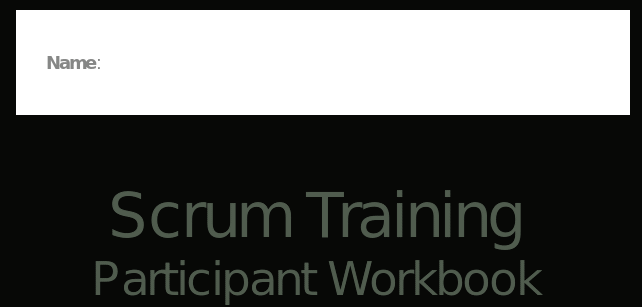DISABILITY SUPPORT SERVICES COMMUNITYBASED DISABILITY THERAPY SERVICES STRATEGY SCOPE
DISABILITY SERVICES – BUSCH STUDENT CENTER SUITE 331GUIDANCE ON DISABILITY AND REASONABLE ADJUSTMENTS INTRODUCTION
OFFICE OF AGING AND DISABILITY SERVICES CRISIS
SPEECH LANGUAGE COMMUNICATION AND NEURODISABILITY SCREENING TOOL THE
!DOCTYPE HTML HTML XMLNSHTTPWWWW3ORG1999XHTML LANGENAUHEADMETA CHARSETUTF8TITLEDEPARTMENT OF SENIORS DISABILITY
0BPICTURE THIS A REPORT ON ARTS AND DISABILITY IN
Community-based Disability Therapy Services Strategy Scope

Disability Support Services
Community-based Disability Therapy Services Strategy Scope
24 November 2016
Purpose of strategy development
The purpose of the Community-Based Disability Therapy Services Strategy is to set a long term strategic vision for all Ministry funded community-based disability therapy services. More specifically, the strategy will:
provide a framework to guide the commissioning of future community-based disability therapy services
enable alignment with the strategic direction of the Ministry DSS and support work to transform the disability system
ensure national consistency of community-based disability therapy services
identify opportunities where value for money is best obtained
identify principles which will underpin the implementation of the strategy
ensure a cross-government perspective is maintained
inform the decision making process of the DSS funding board regarding the commissioning of community-based disability therapy services.
Background
The Ministry of Health has funded community-based disability therapy services for many years to support disabled people to attain and maintain their independence and self-determination. The majority of people who use these services have intellectual and physical disabilities.
Every year, the Ministry spends approximately $7.6 million on community-based disability therapy services delivered by nine non-government organisations. This amount excludes the Assessment, Treatment and Rehabilitation (AT&R) services funded through the 20 District Health Boards (DHBs).
An internal stocktake in early 2016 of current Ministry funded community-based disability therapy services delivered by non-government organisations, had categorised these services as either community-based residential disability therapy services or community-based rehabilitation programmes.
|
Service Type |
Characteristics |
|
|
1. |
Community-based residential disability therapy services |
Delivered in a residential setting, either, intensive or slow stream. Average bed day numbers per annum is 68 beds. Annually, the Ministry spends just over $6m on these services.
|
|
2. |
Community-based rehabilitation programmes
|
Delivered to people by way of a community-based rehabilitation/habilitation programme model. Average client numbers per annum is 752 disabled people. Annual spend of just over $1m on these programmes. |
An internal stocktake and on-going feedback from disabled people and providers of community-based disability therapy services over the years have identified the following areas requiring improvement and development:
inconsistencies in the definition of community-based disability therapy and lack of a clear understanding of its scope and what it is trying to achieve
variations in service delivery models of community-based disability therapy
outdated contract service specifications and a lack of outcome-based measures
lack of national service coverage with most providers servicing the North Island
considerable service provision costs to a small number of disabled people and no clearly defined outcomes being achieved for them.
To address the above issues, the DSS Community-based Disability Therapy Strategy will set a long term vision for community-based disability therapy services and determine the types of community-based disability therapy services the Ministry will need to purchase in the future. This strategy will be closely aligned with the strategic direction of the Ministry disability support services and support the work to transform the disability system.
Funding to implement the community-based disability therapy strategy will be sourced from existing baseline allocation.
Rationale
The rationale for developing this service strategy is to ensure that as DSS moves to transform the disability system, detailed consideration is given to the future components of that system.
Development of the strategy is a requirement of the DSS Annual Business Plan 2016-17 and supports achievement of the NZ Health Strategy, NZ Disability Strategy, DSS Strategic Plan, Whāia Te Ao Mārama, Faiva Ora, the NZ Carers’ Strategy, New Model initiatives and the Enabling Good Lives programme.
Management of the Strategy Development
Vision
The vision of the DSS Community-based Disability Therapy Strategy is to increase the independence and self-determination of disabled people.
Strategy Objectives
Confirm a common definition and understanding of community-based disability therapy in the New Zealand context.
Develop an outcomes based framework specific to community-based disability therapy services.
Ensure community-based disability therapy service delivery models are fit for purpose.
Identify a sustainable model of community-based disability therapy which provides best value for money.
In Scope:
current community-based residential rehabilitation services
current community-based rehabilitation (non-residential) services.
Out of scope:
Assessment Treatment and Rehabilitation services provided by the District Health Boards
Intellectual Disability Compulsory Care and Rehabilitation (IDCCR) services
disabled people funded by Accident Compensation Corporation (ACC)
other Ministry funded disability support services.
Key external stakeholders
disabled people using Ministry funded community-based disability therapy services and their families
providers of Ministry funded community-based disability therapy services
disabled persons’ organisations
New Zealand Disability Support Network – peak body of providers of community-based disability therapy services
Disabled Persons’ Organisations
Ministry of Health, Accident Compensation Corporation, District Health Boards.
Key internal stakeholders
Policy team
DSS Quality Team
Procurement team
Potential for collaboration
As part of the strategy design process, Accident Compensation Corporation (ACC) and other funders of community-based disability therapy services will be engaged for feedback and input.
Strategy development sponsor, leader and team
Strategy development sponsor – Martin Cole, Manager Community Living Team
Strategy project management - Barbara Crawford, Manager Strategy and Contracts Team
Strategy development Leader – Sonya Hintz, Development Manager
Strategy development team members – Sonya Hintz, Riaz Azam, Feala Afoa
Strategy development governance
The DSS Group Manager and Senior Leadership Team will adopt governance responsibility for the development of the DSS Community-based Disability therapy Strategy.
Approximate completion dates
-
Key Milestones
Completion Date
Strategy Development Project Plan completed
December 2017
Stakeholder workshop hosted
February 2017
Draft Strategy out for sector consultation
April 2017
Final Strategy presented to SLT
May 2017
DSS
Community-Based Disability Therapy Services Strategy – Scope
Page
103 DISABILITY IN THE MIDDLE AGES REPRESENTATIONS OF PHYSICAL
15 TONYA STREMLAU DEAF GAIN? DISABILITY DISCLOSURE AND THE
2 DISABILITY WHITE PAPER ACCESS ASSOCIATION OF DISABLED
Tags: disability support, community-based disability, disability, services, therapy, support, strategy, communitybased, scope
- CLÁUSULA INFORMATIVA PARA LA RECOGIDA DE DATOS DE CARÁCTER
- CHAPTER 9 ESTIMATION USING A SINGLE SAMPLE IN MANY
- Farhad Mirzaei job Title dr Farhad Mirzaei Livestock Production
- PRESTACIÓN POR DESEMPLEO ¿QUIÉN TIENE DERECHO A COBRAR
- POWIATOWY URZĄD PRACY W OTWOCKU ULGÓRNA 11 05400 OTWOCK
- PRILOG OGLASU OBJAVA OPISA POSLOVA RADNOG MJESTA ZA KOJE
- PERSATUAN KAKITANGAN AKADEMIK DAN PENTADBIRAN ACADEMIC AND ADMINISTRATIVE STAFF
- UZYSKANIE DOSTĘPU DO SYSTEMU – PROCEDURA REJESTRACJA UŻYTKOWNIKA
- KOSTNADER KNYTTET TIL PROSJEKTER (FRIKJØP INNENFOR ORDINÆR ARBEIDSTID) TIL
- STUDY GUIDE FOR FINAL EXAM FIRST GRADE BEGINNERS
- Z A K O N O STRAJKU FEDERACIJE BOSNE
- DOCUMENTO Nº 1 NÚMERO DE HOJAS QUE CONTIENE
- FORMULARZ NR 3 DO SIWZ ISTOTNE POSTANOWIENIA UMOWNE DOTYCZĄCE
- VIZAT INSPECTORATUL DE STAT ÎN CONSTRUCŢII – DIRECŢIA REGIONALĂ
- KERANGKA ACUAN KERJA TERM OF REFERENCE (TOR) PENGENDALIAN
- BROJ DOKUMENTA DOKUMENT O KRETANJU OTPADA DEO A PODACI
- A MAGYAR REFORMÁTUS EGYHÁZ TAGEGYHÁZAI VÁLASZTÓJOGI TÖRVÉNYEINEK ÖSSZEHASONLÍTÁSA ÁLTALÁNOS
- EXPOSITORES DE CYL POR SECTORES SECTOR NÚMERO VINO
- SOUTHERN RAILWAY NOCWPLGAMCFIRE EXTINGUISHER201516 OFFICE OF THE CHIEF WORKSHOP
- 3 EKSEMPEL PÅ STYREINSTRUKS (MINIMUMSUTGAVE) DET PRESISERES AT
- 15 CARACTERISTICAS DE LOS FARMACOS UTILIZADOS EN EL TRATAMIENTO
- DIGITAL IMAGING FUNDAMENTALS CLASS NOTES CLASS
- ORIGINAL ARTICLES PUBLISHED JULY 1 2006 – JUNE 30
- İSTANBUL 25082006 DUYURU BAŞKANLIĞIMIZA ULAŞAN BILGILER NETICESINDE TC
- Wniosek%20o%20przyznanie%20Dodatku%20Aktywizacyjnego
- SECTION 3 PREQUALIFICATION RESPONSE FORMAT DISCIPLINE T7 TRANSPORTATION
- ORGANIZACIONES COMUNITARIAS ESTATUTO JUNTA DE VECINOS TITULO 1 DENOMINACION
- GSMP BCS RATIFICATIONS PCN SUMMARY JANUARY 2007 DATA
- A MODESTO CITY SCHOOL ROSE AVENUE ELEMENTARY SCHOOL 1120
- [STUDY TITLE] PATIENT POST SURVEY SPANISH VERSION DATE MONTH
 Programación Didáctica 4º eso Ieso Leonor de Guzmán Curso
Programación Didáctica 4º eso Ieso Leonor de Guzmán CursoSOLICITUD DE AUTORIZACIÓN DE TRABAJOS DE INVESTIGACIÓN CIENTÍFICA MARINA
RESUMEN VERBO EL NÚMERO DE LOS VERBOS LAS FORMAS
 JORGE LUIS BORGES EL LIBRO DE LOS SERES IMAGINARIOS
JORGE LUIS BORGES EL LIBRO DE LOS SERES IMAGINARIOS ZAJTRK MALICA KOSILO POPOLDANSKA MALICA VEČERJA POVEČEREK (SLADKORNI) PONEDELJEK
ZAJTRK MALICA KOSILO POPOLDANSKA MALICA VEČERJA POVEČEREK (SLADKORNI) PONEDELJEK PERSONAL FINANCIAL STATEMENT SUBMITTED TO DOVER FEDERAL CREDIT UNION
PERSONAL FINANCIAL STATEMENT SUBMITTED TO DOVER FEDERAL CREDIT UNION AGILE MANIFESTO MANIFESTO FOR AGILE SOFTWARE DEVELOPMENT WE
AGILE MANIFESTO MANIFESTO FOR AGILE SOFTWARE DEVELOPMENT WE INBJUDAN TILL FORTBILDNING ”FÖRBÄTTRA DITT SKOTT” 4 NOVEMBER2017 ARRANGÖR
INBJUDAN TILL FORTBILDNING ”FÖRBÄTTRA DITT SKOTT” 4 NOVEMBER2017 ARRANGÖRNacrt Odluke o Komunalnim Djelatnostima na Osnovu Člana 6
 POUR ÊTRE CONSIDÉRÉ COMME COMPLET LE DOSSIER DOIT COMPORTER
POUR ÊTRE CONSIDÉRÉ COMME COMPLET LE DOSSIER DOIT COMPORTER R E S U M E DRHASSAN MEHANDI
R E S U M E DRHASSAN MEHANDIDARBO SUTARTIES NUTRAUKIMAS DARBO SUTARTIES NUTRAUKIMO PAGRINDAI DARBO
 DESIGN DISCIPLINES ARCHITECTURE COST ESTIMATING FIRE PROTECTION ENGINEERING
DESIGN DISCIPLINES ARCHITECTURE COST ESTIMATING FIRE PROTECTION ENGINEERINGGENOME VIRUS FAMILIES TYPES SPECIES CHARACTERISTICS DSDNA ENVELOPED HERPESVIRIDAE
 WELCOME TO RIT CROATIA! DEAR ERASMUS+ STUDENTS WELCOME TO
WELCOME TO RIT CROATIA! DEAR ERASMUS+ STUDENTS WELCOME TORAPPORT DE MISSION MISSION REPORT TWENTYFIFTH SESSION OF THE
 (SKRAJŠAN URADEN NAZIV NACIONALNE ORGANIZACIJE ZA STARODOBNIKE) ZAPISNIK O
(SKRAJŠAN URADEN NAZIV NACIONALNE ORGANIZACIJE ZA STARODOBNIKE) ZAPISNIK O EUROPASS CURRICULUM VITAE OSOBNI PODACI IME PREZIME MIRJANA
EUROPASS CURRICULUM VITAE OSOBNI PODACI IME PREZIME MIRJANA WEST DUNBARTONSHIRE COUNCIL ECONOMIC DEVELOPMENT SECTION APPLICATION FORM SKILLS
WEST DUNBARTONSHIRE COUNCIL ECONOMIC DEVELOPMENT SECTION APPLICATION FORM SKILLS1 TEMPLATE OF PROJECT FICHE FOR IPA NATIONAL PROGRAMMES